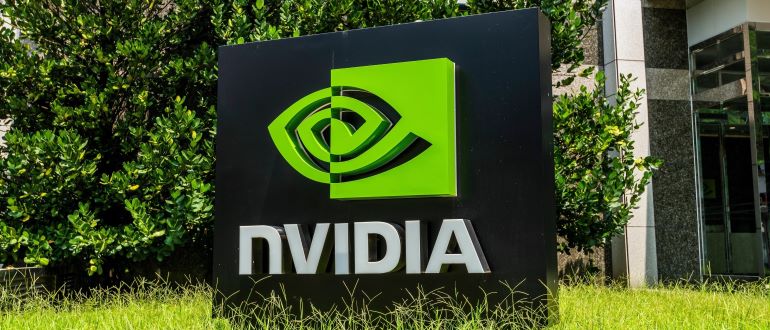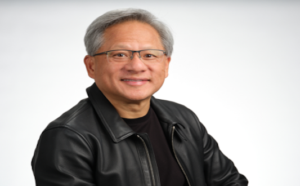
NVIDIA Corp. on Tuesday debuted its latest flagship artificial intelligence (AI) chip, Blackwell Ultra, for building and deploying AI models that it says will help apps reason and act on users’ behalf.
The newest Ultra packs enough computing power to make it easier for AI models to reason — in other words, to break complicated queries down into multiple steps and consider different options.
“AI has made a giant leap — reasoning and agentic AI demand orders of magnitude more computing performance,” NVIDIA CEO Jensen Huang said during a keynote speech at the company’s annual GPU Technology Conference (GTC) in San Jose, Calif. “We designed Blackwell Ultra for this moment — it’s a single versatile platform that can easily and efficiently do pretraining, post-training and reasoning AI inference.”
The family of Blackwell Ultra chips are scheduled to ship in the second half of this year; Vera Rubin, NVIDIA’s next-generation graphics processing unit (GPU) which packs twice the performance of its Grace chips with more memory and bandwidth, Huang said, is expected in the second half of 2026. Rubin Ultra, which comes next, is scheduled for the second half of 2027. Vera Rubin is named after an American astronomer.
Blackwell Ultra boosts training and test-time scaling inference, which applies more compute during inference to improve accuracy, to let organizations accelerate applications such as AI reasoning, agentic AI and physical AI, the company said.
The company also announced the open Llama Nemotron family of models with reasoning capabilities, designed to provide developers and enterprises a foundation for creating advanced AI agents that work independently or as connected teams to solve complex tasks.
The growth of agentic AI is so ubiquitous, Huang predicted, there will be 10 billion so-called digital workers within several years; by the end of the year, he said “100% of all NVIDIA engineers will be AI-assisted.”
In a wide-ranging presentation, Huang shared a fire hose of product news around AI, robotics and accelerated computing. Many of the announcements built off of his CES keynote speech in January and underscore the strength of the company’s software, which serves as a competitive moat.
NVIDIA unfurled technologies to supercharge humanoid robot development, including NVIDIA Isaac GR00T N1, the first open, fully-customizable foundation model for generalized humanoid reasoning and skills.
It released NVIDIA Cosmos, an open and customizable reasoning model for physical AI development that gives developers unprecedented control over world generation.
General Motors Co. and NVIDIA said they are partnering on next-generation vehicles, factories and robots using AI, simulation and accelerated computing. NVIDIA said it will help GM with driver-assistance technology and work with the telecom industry on new 6G networks. Additionally, NVIDIA unveiled NVIDIA Halos, a safety system that combines the company’s automotive hardware and software safety solutions with AI research.
Huang said NVIDIA Dynamo, “essentially the operating system of an AI factory,” is an open-source inference software for accelerating and scaling AI reasoning models in AI factories at a low cost.
“The era of physical AI is here, and together with GM, we’re transforming transportation, from vehicles to the factories where they’re made,” Huang said, announcing the automotive and factory announcements.
NVIDIA’s torrent of news at GTC is likely to please Wall Street analysts who expect the company to lead an AI renaissance in what many are calling the most consequential era in high-tech history.
“We believe this is Year 3 of what will be an 8-10 year build out of the AI Revolution,” Wedbush Securities analyst Dan Ives wrote in a note to investors early Tuesday. “We believe this week’s Nvidia GTC Conference will be a turning point for tech stocks as the Street starts to refocus on the AI Revolution and the massive tech spending ahead for the coming years.”
“In essence, Nvidia’s chips remain the new oil or gold in this world for the tech ecosystem as there is only one chip in the world fueling this AI foundation…and it’s Nvidia,” Ives wrote later in the day.
Before the keynote, NVIDIA presented a 90-minute pregame show with hosts from the Acquired business podcast, Ben Gilbert and David Rosenthal, to hype what they called “the Super Bowl of AI” and the “center of the AI universe.” Among their guests to discuss and assess NVIDIA’s rich history were former Intel Corp. CEO Pat Gelsinger, Dell Inc. CEO Michael Dell and ServiceNow Inc. CEO Bill McDermott.
One assessment was that NVIDIA was collateral damage from the dot-com bust from which it emerged.
Early in the show, Huang appeared unannounced to describe his early days of working at Denny’s and brought along with him his favorite dish, “pigs in a blanket” (sausage rolled within pancakes and topped with syrup) — now called “NVIDIA bites” at the erstwhile American diner — and served them to panelists.
“The younger version of me was more intense… and I could work all night,” a self-deprecating Huang said, recalling NVIDIA’s star-crossed early years and brushes with extinction. “Maybe I’m wiser now, but I appreciate my younger self.”
He also acknowledged NVIDIA was close to death’s door before pulling it back from near insolvency through sheer will, hard work and the company’s evolution from chip maker to general-purpose compute company.
“I applaud Jensen for his tenacity” in developing a broader view to throughput, or accelerated computing vs. scaled computing, “and he got lucky with AI,” Gelsinger told the Acquired hosts. He predicted realizable quantum computing by the end of the decade. “Most of humanity runs on quantum effects,” Gelsinger added.
“We started building LLMs (large language models) with NVIDIA out of the gate,” McDermott said. AI “loosens” enterprises and lets them address complex structures that were previously hard to crack, he said. “Jensen has proven a masterpiece in making it all happen.”
All in all, NVIDIA’s AI extravaganza was a slick, highly-choreographed affair that would have made the late Steve Jobs proud — save for one small miscue that cracked the facade but provided some much-needed levity.


